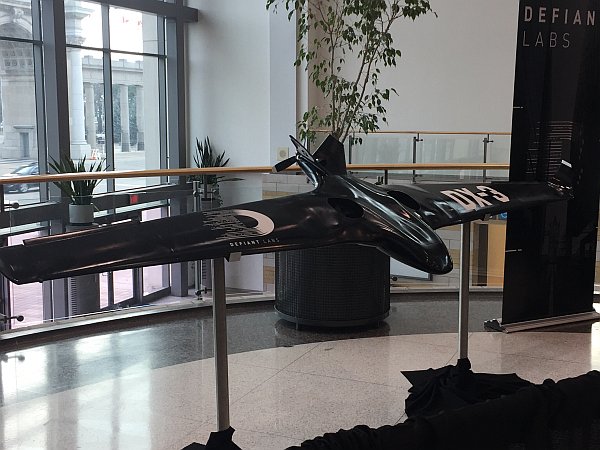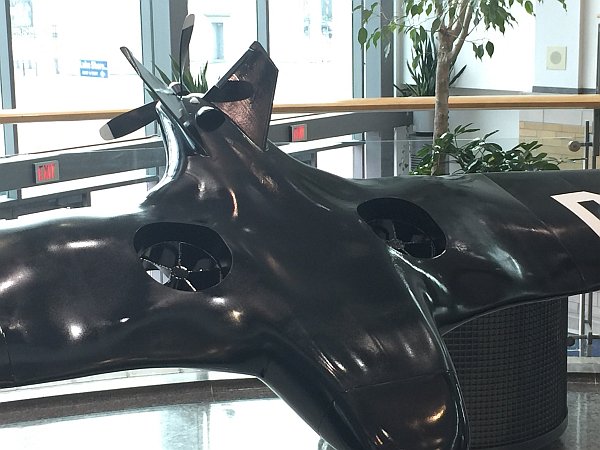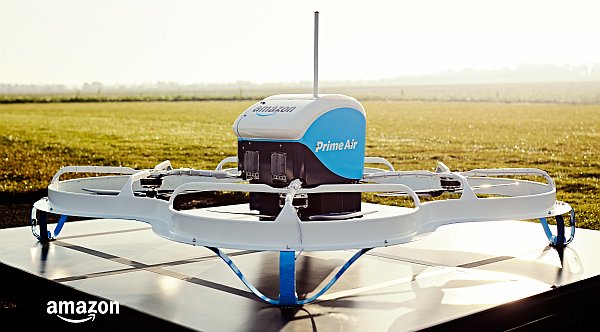Podcast: Play in new window | Download (Duration: 33:46 — 19.4MB)
Subscribe: Google Podcasts | Email | RSS
Amazon Prime Air begins a package delivery beta test, a DOT audit finds some FAA deficiencies, Defiant Labs shows a new VTOL long endurance drone, three models of aerodynamic lift are called into question, some drone tips for growers, and a wild video of the week.
News
Amazon Claims First Successful Prime Air Drone Delivery
Amazon Prime Air delivered a TV streaming stick and a bag of popcorn to a Cambridge, UK customer in a private beta test. The process from order to receipt lasted 13 minutes and included a fully autonomous flight with no human pilot involved in the process. Amazon plans to expand the test, add more customers to the program, and collect operational data for further development of package delivery concepts. See the Amazon promotional video: Amazon Prime Air’s First Customer Delivery.
FAA Lacks Risk-Based Oversight Process for Civil UAS
The U.S. Department of Transportation’s Office of the Inspector General (OIG) released a 20-page audit report titled, FAA Lacks Risk-Based Oversight Process for Civil Unmanned Aircraft Systems [PDF]. The report notes that “FAA does not have a fully developed risk-based process to oversee UAS operations, a key tool for focusing resources on a range of emerging risks, such as increased reports of UAS operating near airports.” The OIG offers six recommendations, four of which the FAA says are already accomplished.
New 24-Hour Endurance Hybrid Drone Developed for Monitoring & Inspection
Canadian company Defiant Labs has announced their new DX-3, a vertical take-off and landing drone with a fixed wing for flight. Applications for the long endurance, hydrogen fuel cell-powered drone include monitoring and inspecting remote infrastructure such as pipelines and power transmission lines. The DX-3 will be designed, manufactured, and produced in Canada.
Listener Ken captured some photographs of the DX-3 at the International UAS Show in Toronto:


Birds flying through laser light reveal faults in flight research, Stanford study shows
Stanford researchers wanted to test three predictive models of airflow that are based on flying animals. These models are sometimes used in the design of flying robots and drones. Using a trained bird flying through a laser sheet that illuminated micron-sized aerosol particles, the study found that all three models failed to predict the actual lift generated by the bird.
Stanford researchers debunk popular flight models by flying birds through lasers
UAVs: 10 tips from users
Two Iowa State University agricultural biosystems engineers provide Corn & Soybean Digest readers with tips learned first-hand.
Video of the Week
The Pilots Arrive | FlightLab: Mojave Boneyard | Intel
Take a wild quadcopter ride through a Mojave boneyard of retired jumbo jets, and watch the obstacle avoidance of Intel’s Yuneec drone.

